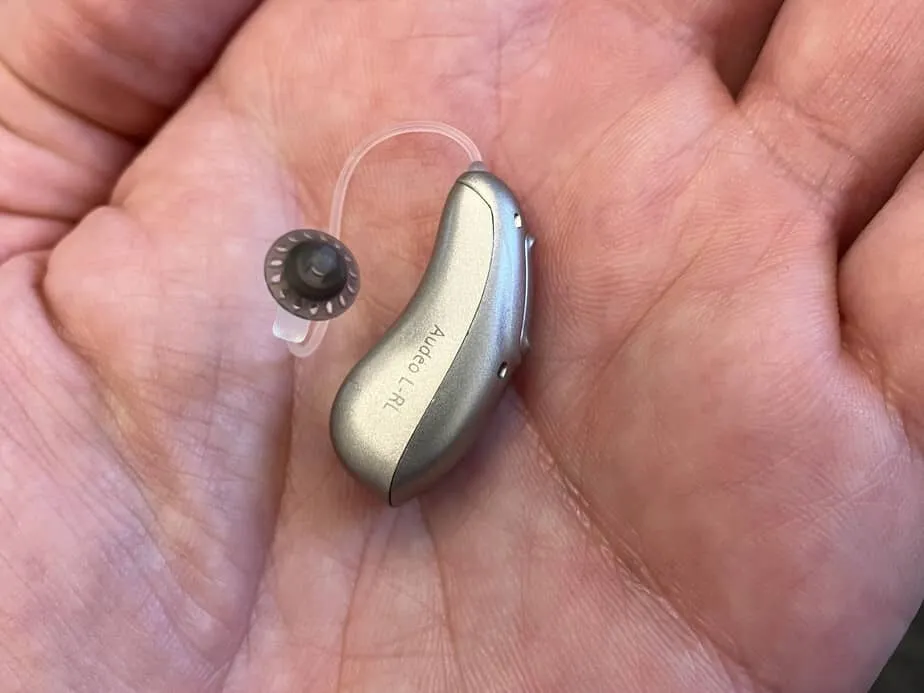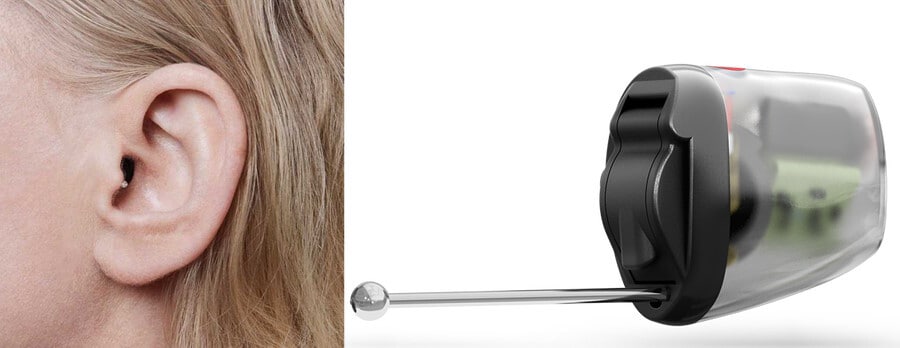When it comes to selecting a hearing aid, there are several important factors to consider in order to find the best solution for your individual needs and improve your quality of life. With advancements in technology, there are a wide variety of hearing aids available on the market, each offering different features and benefits. To make an informed decision, it is crucial to take into account the following considerations:
1. Degree and Type of Hearing Loss
The first step in choosing a hearing aid is to determine the degree and type of your hearing loss. This can be done through a comprehensive hearing evaluation conducted by an audiologist. The evaluation will help identify whether you have mild, moderate, severe, or profound hearing loss, as well as the specific frequencies and sounds you may struggle with. Understanding your hearing loss will guide you in selecting a hearing aid that addresses your unique needs.
If your hearing loss is greater than moderate that you will need professionally fit hearing aids instead of OTC devices.
2. Styles and Designs of Hearing Aids
When it comes to selecting a hearing aid, it’s important to consider the various styles and designs available to find the best fit for your needs. Hearing aids come in different forms, each offering unique benefits and considerations. One of the most popular styles in the market is the receiver-in-canal (RIC) option, which holds approximately 80% of the market share.

The RIC style combines the advantages of both behind-the-ear (BTE) and in-the-canal (ITC) designs. It consists of a small housing that sits behind the ear, connected to a thin wire that holds the receiver or speaker directly in the ear canal. This configuration allows for improved sound quality and a more natural listening experience.
One of the key reasons for the popularity of RIC hearing aids is their versatility and suitability for a wide range of hearing losses. They can effectively address mild to moderate hearing loss, as well as some cases of severe hearing loss. The placement of the receiver in the ear canal enables the sound to be delivered directly, resulting in clearer and crisper sound perception.
In addition to the RIC style, there are other options to consider. Behind-the-ear (BTE) models are known for their versatility and power. They are suitable for a broader range of hearing losses, including severe to profound hearing loss. BTE hearing aids are easily adjustable and can accommodate a variety of amplification needs. All hearing aids should be customized to your specific needs.
Completely-in-the-canal (CIC) models, on the other hand, are more discreet and sit deeper within the ear canal, making them nearly invisible. They are ideal for individuals seeking a highly discreet option, although they may not be suitable for more significant hearing loss.

In-the-ear (ITE) hearing aids strike a balance between visibility and performance. They are custom-made to fit within the outer portion of the ear and are suitable for mild to severe hearing loss. ITE models offer larger controls and longer battery life (even rechargeable batteries) compared to smaller styles.
However, it must be stated that occlusion can be a big downside of CIC and ITE styles of hearing aids. It is like talking with a finger in your ear. You may feel plugged up.
When choosing a hearing aid style, it’s crucial to consider factors such as personal preference, comfort, visibility, lifestyle, dexterity, hairstyle (for short hair or long hair), and cosmetic preferences. Discuss your specific needs with an audiologist who can provide recommendations based on your hearing profile and preferences.
While the RIC style currently dominates the market, it’s important to remember that the best hearing aid for you is the one that suits your individual needs and preferences. By consulting with an audiologist, you can make an informed decision and find a hearing aid that will enhance your hearing experience and quality of life.
3. Features and Technology
Modern hearing aids are equipped with advanced features and cutting-edge technology to enhance your hearing experience. Some key features to consider include:
- Noise reduction: Reduces background noise for improved speech understanding. This has been around for years but is the constant focus of all the research. It has improved greatly.
- Directional microphones: Focuses on sounds coming from the front while minimizing sounds from other directions, advances keep making them better.
- Wireless connectivity: Allows for seamless integration with smartphones, TVs, remote microphones, and other devices. Connecting your phone via Bluetooth is very common for hearing aids.
- Rechargeability: Offers convenience by eliminating the need for regular battery replacements.
Consider which features are most important to you and discuss them with your audiologist to find a hearing aid that meets your specific requirements.
4. Customization and Programming
To ensure optimal performance, a hearing aid should be properly programmed and customized to your individual hearing needs. This is typically done by an audiologist who can adjust the settings and fine-tune the device to match your specific preferences. Look for hearing aids that offer flexibility in programming, allowing for adjustments as your hearing changes over time.
The Importance of Real Ear Measurements
When selecting a hearing aid, one crucial aspect that should not be overlooked is the utilization of real ear measurements (REMs). REMs play a vital role in ensuring that your hearing aid is properly calibrated to your unique ear anatomy and hearing needs.
| Role of REMs | Importance |
|---|---|
| Accuracy in Amplification | Ensures amplification matches your prescription and targets specific areas of need |
| Verification of Fitting Targets | Provides objective verification if the hearing aid meets the prescribed amplification goals |
| Individual Ear Characteristics | Allows customization to your specific ear anatomy |
| Enhanced Patient Satisfaction | Ensures you are receiving the appropriate amplification for optimal hearing |
REMs involve the use of specialized equipment to measure the sound levels within your ear canal while wearing the hearing aid. This measurement process provides valuable information about how the hearing aid is performing in your specific ear, taking into account factors such as the shape of your ear canal, the presence of wax, and other individual characteristics.

There are several key reasons why REMs are important when fitting a hearing aid:
1. Accuracy in Amplification
REMs enable the audiologist to accurately measure the sound levels reaching your eardrum while wearing the hearing aid. This measurement ensures that the amplification provided by the device matches your prescription and targets the specific areas where you need assistance. By fine-tuning the hearing aid based on REMs, your audiologist can optimize speech intelligibility and overall sound quality, leading to a more satisfying and personalized listening experience.
2. Verification of Fitting Targets
By comparing the measured sound levels in the ear canal to the desired target levels, REMs provide objective verification of whether the hearing aid is meeting the prescribed amplification goals. This verification step is crucial in confirming that the hearing aid is correctly programmed and adjusted to address your individual hearing loss. It helps avoid under- or over-amplification, ensuring that you receive the appropriate level of sound amplification for optimal hearing.
3. Individual Ear Characteristics
Every individual has unique ear characteristics, such as the size and shape of the ear canal, which can affect the way sound is delivered and perceived. REMs take these individual differences into account, allowing the hearing aid to be customized to your specific ear anatomy. By considering these factors, the hearing aid can be adjusted to provide a more accurate and tailored listening experience, maximizing its effectiveness in accommodating your hearing needs.
4. Enhanced Patient Satisfaction
By incorporating REMs into the fitting process, you can have confidence that your hearing aid is precisely calibrated for your ear and hearing requirements. This precision can significantly improve your satisfaction with the device, as it ensures that you are receiving the appropriate amplification and the best possible sound quality. REMs contribute to better speech understanding, increased comfort, and overall improved communication abilities, leading to greater overall satisfaction with your hearing aid.
When seeking a hearing aid, it’s essential to work with an audiologist who utilizes REMs as part of the fitting process. REMs provide valuable insights into the effectiveness of the device in meeting your specific needs. By incorporating this objective measurement approach, your audiologist can fine-tune the hearing aid for optimal performance, ensuring that you receive the maximum benefit and improved quality of life from your hearing aid investment.
Real ear measurement are the GOLD STANDARD in the Audiology World.
5. Budget and Insurance Coverage
Hearing aids can vary significantly in price, so it’s important to establish a budget before beginning your search. See the breakdown of the costs of buying a hearing aid. Check with your insurance provider to determine if they cover the cost of hearing aids, as this can greatly impact your options. Additionally, inquire about any warranty or trial periods offered by the manufacturer or hearing healthcare provider to ensure satisfaction with your chosen device.
6. Ongoing Support and Follow-up Care
Choosing a hearing aid is just the beginning of your journey toward better hearing. Consider the availability of ongoing support and follow-up care provided by the manufacturer or hearing healthcare professional. Regular check-ups, adjustments, and maintenance are essential for maximizing the benefits of your hearing aid over time. Select a provider who offers comprehensive aftercare services to address any concerns or issues that may arise.
At a minimum, you should plan on a yearly hearing test to update the settings in a hearing aid.
Remember, the expertise and guidance of an audiologist are invaluable when selecting a hearing aid. They will assess your hearing needs, guide you through the decision-making process, and ensure that you receive the best possible solution for your hearing loss. By considering the factors discussed above and seeking professional advice, you can make an informed choice that will significantly improve your quality of life.
I make a lot of recommendations on this website for hearing aids but my biggest recommendation is to find an audiologist that can cater to what is most important to you.
